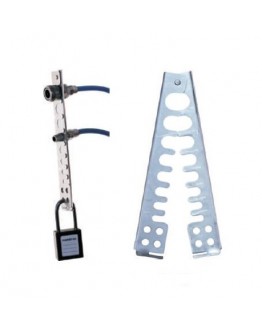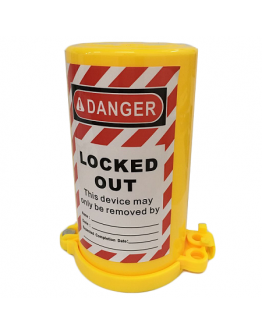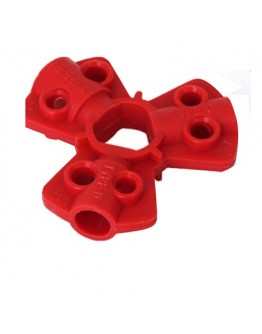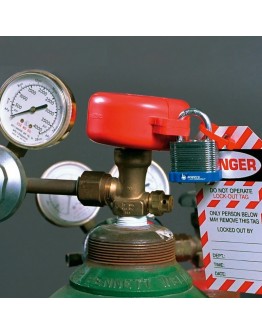Gas Cylinder Lockout
Air Source Lockout Beian-Lock BAN-Q11Enhance pneumatic equipment safety with the Beian-Lock BAN-Q11 Air Source Lockout. Crafted from 304 stainless steel, this lockout prevents fittings from reconnecting to pressurized air sources, ensuring workplace safety. With dimensions of 196mm length x 35mm width x 3mm thickness, it fits most pneumatic fittings and accepts up to 4 safety padlocks. Ideal for use with safety padlocks and hasps, promoting comprehensive lockout/tagout procedures.Ensure Air Sour..
Pre orderGas Cylinder lockouts Beian-Lock BAN-Q31Ensure the safety of your gas cylinders with the Gas Cylinder Lockouts Beian-Lock BAN-Q31. Designed to prevent unauthorized operation of the main gas cylinder valve, this lockout device offers a secure solution for industrial settings. Made from durable polypropylene and featuring a lightweight design, it provides easy and quick installation, with compatibility for various valve diameters and threads. With its bright yellow color and user-friendly design, ..
Pre orderPneumatic Circuit Breaker Lockouts BAN-Q01Efficiently isolate pneumatic energy with BAN-Q01 Pneumatic Circuit Breaker Lockouts, made from durable ABS plastic in a striking red color. These compact lockouts, measuring 77mm x 71mm x 21mm and weighing just 26g, offer a cost-effective solution without the need for in-line lockout valves. Applied to male fittings, they effectively isolate equipment from compressed air sources, accommodating 1/4 in., 3/8 in., and 1/2 in. fittings. The device features ..
Pre orderTank Lockouts BAN-Q21Secure your industrial tanks with Beian-Lock Tank Lockouts BAN-Q21. Crafted from durable ABS plastic, these lockouts are designed to fit in tight spaces and prevent unauthorized access to valve handles. With dimensions of 51.5mm(L)×54mm(W)×25mm(H) and weighing 106g, they offer reliability and security for industrial applications. The valve stem hole is 31.5mm in diameter, accommodating various valve sizes. Made of rugged polystyrene plastic, these lockouts can withstand hars..
Pre orderGas cylinder and tank lockout are important safety measures for workers who handle gas cylinders and tanks containing hazardous materials. The purpose of these lockouts is to prevent the accidental release of gas or other hazardous substances and protect workers from harm.
Gas cylinder lockouts are devices that secure gas cylinders during transport, storage, or use. These lockouts come in various shapes and sizes to fit different types of gas cylinders and can be made of durable materials, such as metal or plastic, to withstand the conditions of use.
Tank lockouts are designed to secure tanks that contain hazardous materials, such as chemicals or gases, during maintenance, repair, or other work. These lockouts come in various sizes and shapes to fit different types of tanks and can be made of strong, durable materials to withstand harsh conditions.
Beside to securing the tank or gas cylinder, it is also important to properly label and tag the lockout device. Labeling and tagging help to clearly identify the energy source that is locked out and can help to ensure that all workers understand the safety procedures for working around the energy source.
When using gas cylinder or tank lockouts, it is important to follow all safety procedures and guidelines, including wearing personal protective equipment (PPE) and following proper lockout/tagout (LOTO) procedures. Proper training and education on the use of lockouts and LOTO procedures is also important to ensure that workers understand the dangers and how to properly secure the energy source.
In addition to following proper safety procedures, it is also important to regularly inspect and maintain the lockout devices to ensure that they are in good condition and functioning properly. If a lockout device becomes damaged or worn, it should be replaced as soon as possible to ensure continued safety.
And gas cylinder and tank lockouts play a crucial role in protecting workers who handle hazardous materials. By using these lockouts, following proper safety procedures, and implementing other safety measures, employers can help to create a safe working environment and minimize the risk of injury or harm to workers. It is important to choose the right type of lockout device for the specific energy source, and to properly label and tag the lockout to ensure that all workers understand the safety procedures for working around the energy source.











.png)